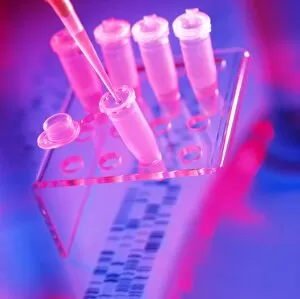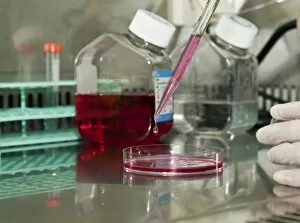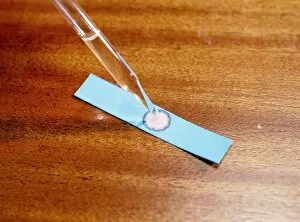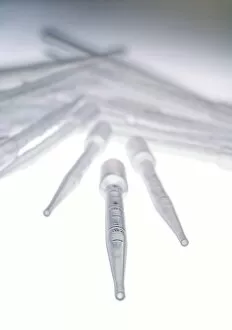Pipette Collection (#4)
"Pipette: A Timeless Tool in the World of Science" In the ever-evolving field of scientific research, one tool has stood the test of time – the pipette
For sale as Licensed Images
Choose your image, Select your licence and Download the media
"Pipette: A Timeless Tool in the World of Science" In the ever-evolving field of scientific research, one tool has stood the test of time – the pipette. From testing for viruses to conducting intricate experiments, this versatile instrument has been a constant companion to scientists throughout history. Step back in time to 1925, where a screen print captures chemists in a bustling chemistry lab. With their multi-pipettes in hand, they meticulously analyze compounds and unravel the mysteries of chemical reactions. Fast forward to 1950, and we find ourselves amidst another group of dedicated chemists diligently working with pipettes as they strive for groundbreaking discoveries. Even earlier than these snapshots is an intriguing black and white photo from January 14th, 1920. Here we see G. F. Beyer, an Internal Revenue Bureau Chemist, skillfully utilizing a pipette during his meticulous work. This image serves as a testament to how long this indispensable tool has been aiding researchers across various disciplines. But it's not just historical photographs that highlight the importance of pipettes; modern illustrations also capture its significance. In one digital representation, we witness microtubes filled with samples alongside a precise DNA sequence being manipulated by none other than a trusty pipette-wielding scientist. The beauty lies not only in its functionality but also in its simplicity – an illustration showcases this timeless tool against a stark black and white backdrop. It reminds us that even amidst technological advancements, some instruments remain irreplaceable due to their reliability and accuracy. As we delve deeper into laboratories today, we encounter primary cultures of superior cervical ganglia cells under examination by diligent researchers who rely on their trusty pipettes for accurate measurements and transfers. Whether it be testing for viruses or conducting intricate experiments at any point throughout history or even now within cutting-edge labs worldwide – one thing remains certain: The humble yet powerful pipette continues to play an integral role in scientific progress.






















